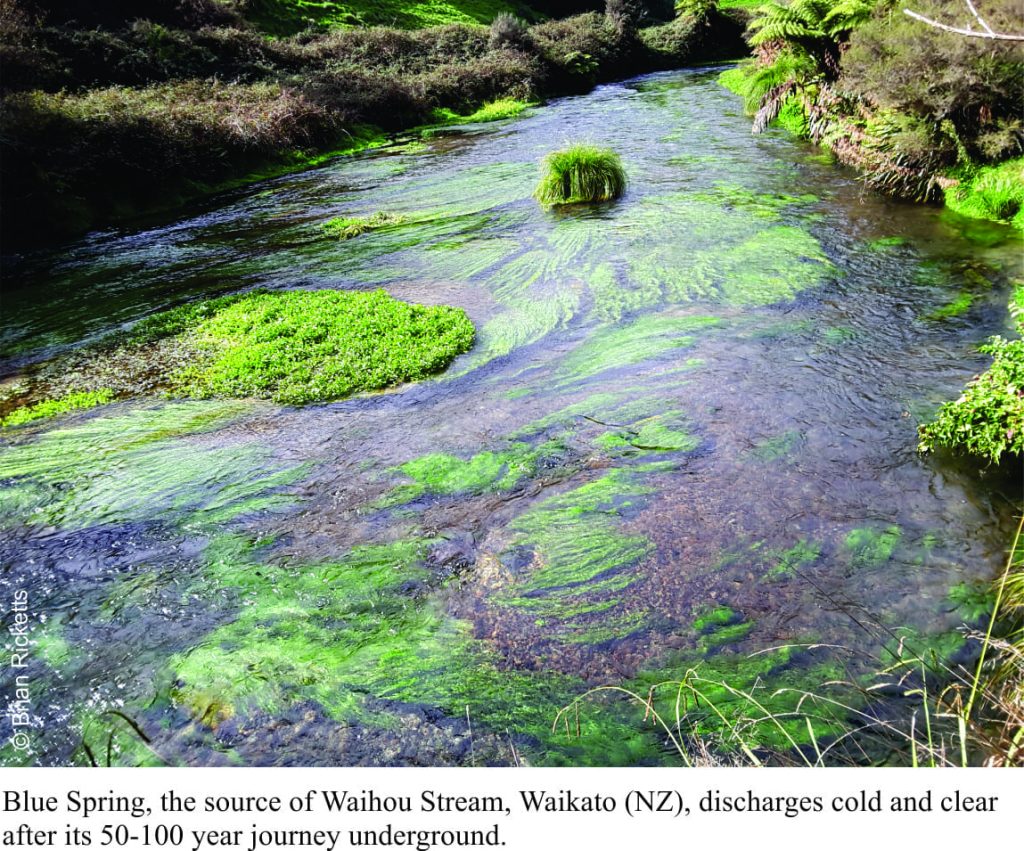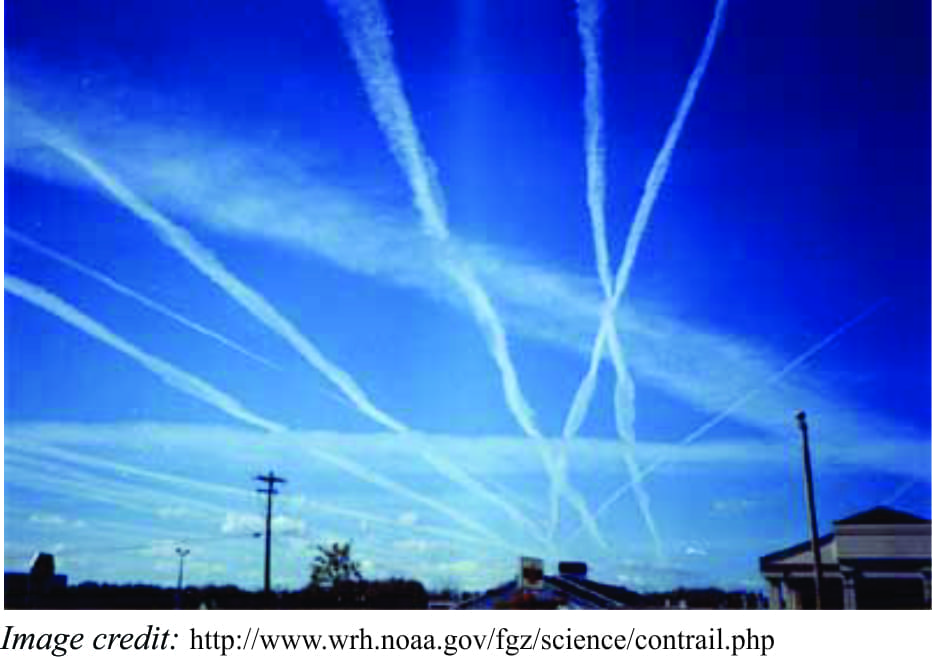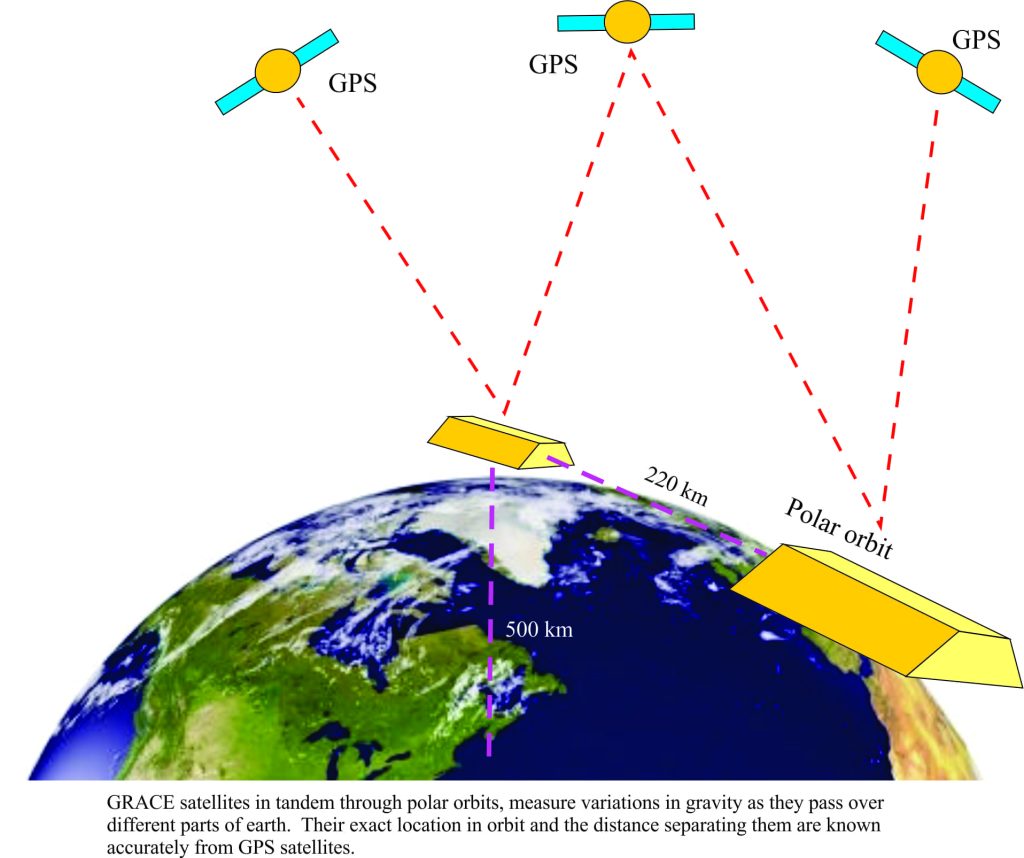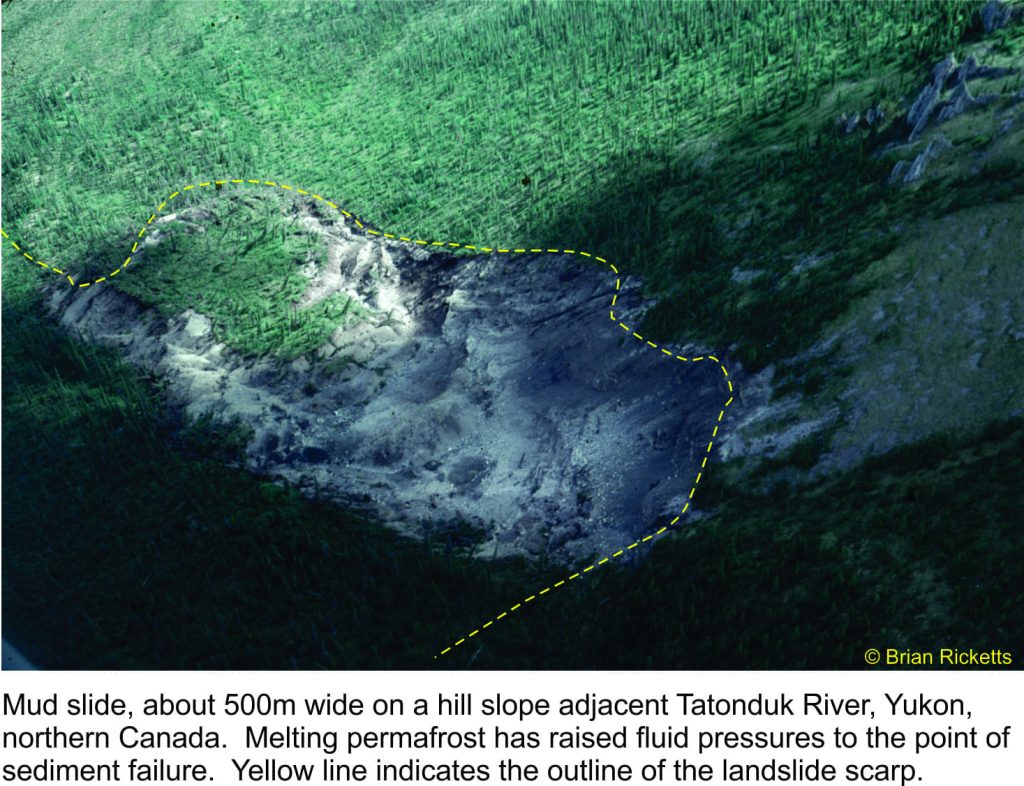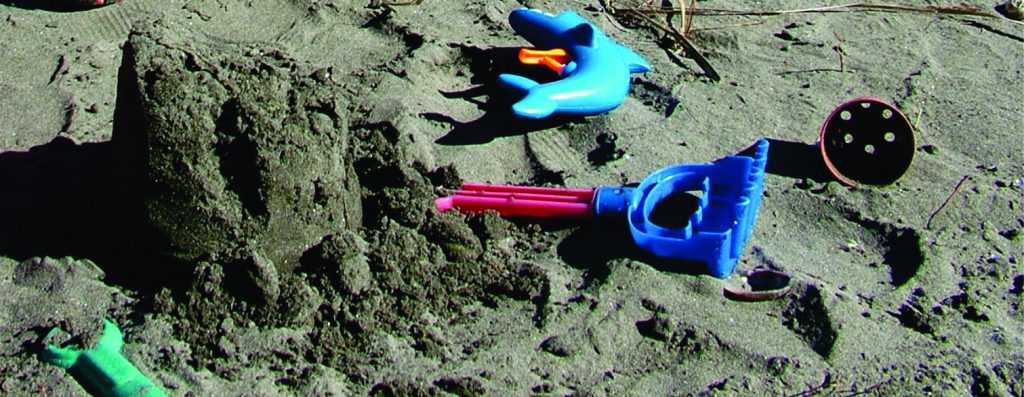It rains quite a bit on Mamaku Plateau, the tableland underlain by volcanic debris that was deposited violently 240,000 years ago; an eruption that also gave rise to Lake Rotorua caldera (central North Island, New Zealand). Some of that rain seeps into the myriad fractures, nooks and crannies, and heads west as groundwater. Fifty to 100 years later that same water emerges, chilled to a cool 11oC, at Blue Springs (about 40km west of Rotorua). Spring water here flows at 42 cubic metres per minute (9,240 gallons per minute), enough to maintain a decent-sized stream (Waihou Stream). Continue reading
Tag Archives: groundwater
Contrails, analogues, and visualizing groundwater flow
How to picture groundwater flow beneath the surface.
Analogues and analogies. Standard dictionaries define these as a comparison, correspondence, or similarity between one thing and another, that can apply to concepts, ideas or physical entities. They are tools, used to illustrate concepts, particularly abstract ideas, to help explain phenomena or theories. Science makes frequent use of analogies. It does so because many phenomena that it attempts to investigate and explain extend beyond normal human experience, beyond what is visible to the unaided eye, beyond what we can touch. Well-chosen analogies can help us understand the universe without, and the universe within. Continue reading
A misspent youth serves to illustrate groundwater flow
The mystery of groundwater flow solved!
Groundwater is always on the move. Under some conditions, in fractures or other large conduits, it can move quickly; almost at a walking pace. Under other conditions it moves inexorably slowly, like fractions of a millimeter a year. Regardless, it is always compelled to move. Movement requires energy. Where does this energy come from? What drives the flow of groundwater? Answers to these questions provide the foundations to the science of hydrogeology. Continue reading
Monitoring groundwater from space
You could be excused for labeling this title conspiratorial, the brutal reality encapsulated in Alan Parsons prog rock group’s signature song or a Helen Mirren thriller. And if that is your inclination, don’t bother reading any further because this post deals with far more mundane uses of remotely sensed data. The data sets are generated by two groups of satellites that measure very different attributes of the earth, gravity and light spectra. Teasing the data has given us multiple stories of how systems like surface and groundwater are responding to human activities and natural processes. Some of these stories make grim reading.
Landslide! How groundwater affects the stability of slopes
Groundwater contamination; messing around with aquifers


Unfortunately, because of foolishness, greed, and ignorance, we have managed to contaminate many important aquifers
The incident (September, 2016) involving wastewater ingress via a sinkhole to the Floridan Aquifer in Polk County, Florida is yet another reminder of the susceptibility of groundwater to contamination. Other recent events like the 2016 Samarco tailings dam failure in Brazil (caused by loading of weak, groundwater-saturated materials), the 2010 Kolantar red mud dam failure in Hungary (mostly caustic, iron oxide, aluminium oxide, but worrying levels of chromium, lead and mercury), and Imperial Minerals 2014 Mount Polley dam failure tailings dam failure, all had immediate and devastating effects on surface water. In the longer term it is likely that downstream shallow aquifers have also been compromised. Continue reading
“My water well taps into an underground river” and other myths
“Our water well taps into an underground lake”.
“There’s an underground river running beneath our property”.
“The river under our property comes from that volcano over there” (about 100km away)
These are just some of the explanations and descriptions of groundwater that persist in common discussion. Of course there are ‘underground rivers’ but they are generally restricted to limestone country, along with landforms like karst and sinkholes. But underground lakes…?
This, the 3rd post in the Groundwater Series looks at aquifers and groundwater storage
The Architecture of Connected Holes; A Different Way to Look at the Liquid Earth
2nd in the Series on Groundwater
We commonly differentiate the solid earth in terms of its architecture, whether it is the foundations of great mountain ranges, or the solidified magmas that underpinned ancient volcanoes. All rocks, whether layered sedimentary rocks or massive intrusive granites, have unique characteristics that define their physical, chemical and biological make up – their architecture.
WE can also think of groundwater in terms of its own architecture. The productivity of an aquifer depends first and foremost on its porosity and permeability. We can use these two fundamental properties to define the architecture of earth materials.
Whiskey is for drinkin’; water is for fightin!


This is the first in a series of posts on underground water, or groundwater. The posts will outline, with a non-specialist perspective, the science of aquifers, groundwater movement, how groundwater interacts with surface water, water extraction-pumping, and contamination. Continue reading
From Sand to Stone = Sandstone; A Remarkable Transformation
You are at the beach, by the river, in the garden; you walk through soft sand, squish through mud, pull weeds and sow seed in soil. They’re all soft, squishable, digable. But throughout the 3400 million years of our Earth’s known sedimentary record, countless millions of times, these same deposits have hardened to rock. Continue reading

